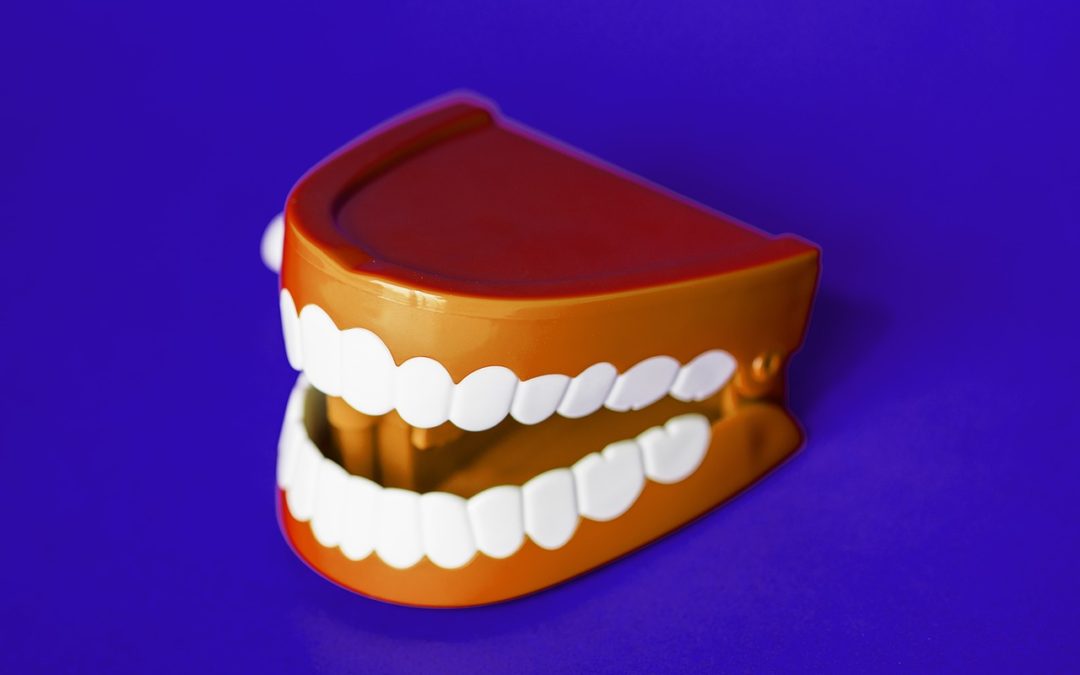Dentures are replacements for missing teeth that can be taken out and put back into your mouth. Unfortunately, they will never feel exactly the same as one’s natural teeth. Nonetheless, modern day dentures are organic looking and more fitting and comfortable than ever before.
That being said, there are mainly two types of dentures: full and partial. Your local Rancho Cucamonga Dentist will assist you in selecting the type of denture that’s best for you based on whether some or all of your teeth are going to be taken out and replaced, and the cost involved with replacing them.
So How Do They Work?
With full dentures, a flesh-colored acrylic base comfortably fits over your gums. Typically, the base of the upper denture covers the palate (the roof of your mouth), while that of the lower denture is shaped similar to a horseshoe so it can fit snuggled around your tongue.
Dentures are custom-made in a dental laboratory from impressions taken of your mouth. Your local Rancho Cucamonga Dentist will generally figure out which of the three types of dentures described below is best for you and your oral health.
Conventional Full Denture
A conventional full denture is placed in your mouth after the remaining teeth are removed and tissues have healed. Healing may take a few months, at which time you are without teeth.
Instant Full Denture
An instant full denture is inserted right away after the remaining teeth are removed. Normally, your Rancho Cucamonga Dentist takes measurements and makes models of your jaw during a prior visit.
Even though immediate dentures offer the benefit of never having to be without your teeth, to take into consideration that they must be relined a few months after being inserted. This is because the bone supporting the teeth reshapes as it heals, causing the denture to become loose.

Partial Denture
A partial denture relaxes on a metal framework that attaches to your natural teeth. Some of the times, crowns are placed on your natural teeth and act as anchors for the denture. The great part about it is that partial dentures offer a removable alternative to bridges.
How Long Do They Take To Get Used To?
New dentures may feel awkward or uncomfortable for the first few weeks or even months. Eating and speaking with dentures might take some time to get used to. A bulky or loose feeling is common, while the muscles of your cheeks and tongue adapt and learn to hold your dentures in place.
Excessive saliva flow, a feeling that the tongue does not have enough room, and a bit of irritation or soreness are also common. If you experience irritation, see your local Rancho Cucamonga Dentist.
What’s The Longevity Of Dentures?
Over a period of time, your denture will need to be relined, remade, or rebased as a result of normal wear and tear. Rebasing means making a new base while keeping the existing denture teeth.
In addition, as you age, your mouth naturally changes. These changes cause your dentures to loosen, making chewing hard and irritating your gums. At the very least, you should see your Rancho Cucamonga Dentist annually for a checkup.
Tips For Denture Care
- When handling your dentures, our Rancho Cucamonga Dentist recommend that you stand over a folded towel or basin of water. Dentures are fragile and may break easily if dropped.
- Don’t let your dentures dry out. Our Rancho Cucamonga Dentist suggest that you place them in a denture cleanser soaking solution or in plain water when you’re not wearing them. Never use hot water. Warm water can cause your dentures to warp.
- Brushing your dentures daily will remove food deposits and plaque, and aid in preventing them from becoming stained.
- Our Rancho Cucamonga Dentist advise that you brush your gums, tongue and palate every morning with a soft-bristled brush before you insert your dentures. This stimulates circulation in your tissues and helps remove plaque.
For the latest tips on oral health, flossing, dental care, and much more, make sure to follow our blog at: http://www.arrowdentalarts.com/blog

